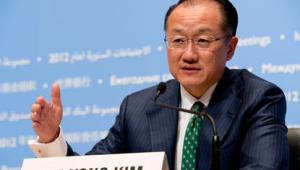The ODI’s research, published today, confirms China’s growing role in the development landscape, which the think-tank concluded provided developing country governments more choice and bargaining power with their traditional donors.
However, although Annalisa Prizzon, research fellow at the ODI, said China’s emergence on the new aid landscape could be key to helping poorer countries, she pointed out that not every government can count on big sums from the increasingly prominent global player.
“Our research suggests funds from China go to those countries it favours at a geopolitical level, with those that have experience tense diplomatic relations receiving much less.”
In Cambodia, a key Chinese ally, as well as Ghana and Laos, Chinese funds accounted for more than 70% of aid flows outside of those from traditional donors like the US, UK and European Union, as well as development banks and international finance institutions like the International Monetary Fund.
However Vietnam, which has had a long history of turbulent relations with China hasn’t seen this level of generosity.
Between 2003 and 2005, China accounted for around 10-20% of non-Official Development Assistance (ODA) flows to Vietnam. This fell to less than 5% in 2010-12, after disputes over territorial issues in the South China Sea.
Senegal, which only re-opened diplomatic relations with China in 2005 after recognising Taiwan instead since 1996, also only receives around 10% of their non-ODA flows coming from China.
However, the ODI said Chinese funds could be integral in development efforts to those who it maintained close relationships.
Prizzon noted that the rise of China as a donor has meant more negotiating power for some countries with their traditional donors.
The report highlights the cases of Ethiopia and Uganda, where the availability of Chinese money has enabled the governments to adopt policies that do not tally with those conventionally stipulated by institutions like the World Bank or IMF and allowed them to pay less attention to the governance concerns of other traditional donors.
Outside of its exclusion of countries with which it has poor relations, China’s aid programme has also opened up funding opportunities for governments typically shunned by the international community.
Following a 2006 coup in Fiji, when the government failed to hold elections in 2009 Australia, New Zealand, the EU and other bilateral donors imposed diplomatic and financial sanctions. As a result Fiji looked elsewhere, borrowing heavily from China as well as Malaysia.
The ODI found a number of reasons why developing countries might prefer aid from non-traditional sources like China, including reduced conditions attached to the money, alignment with national priorities and speed of delivery.
Diversified funding was also identified as a priority, explaining why China and other non-traditional sources of finances like sovereign bonds are increasingly popular.
But China is also one of the world’s least transparent sources of aid, according to this year’s 2016 Aid Transparency Index. The ODI also found that non-traditional donors are less concerned agendas on aid effectiveness and coordination.
ODA from traditional bilateral donors remains one of the most prominent sources of funding, accounting for 23% of global aid flows in 2012, second only to flows from international institutions and development banks (37%).
Non-traditional bilateral donors, such as Brazil and India, accounted for 13% of flows, with China making up 5% of this.
Philanthropy was the source of a further 22% of aid flows, but these tended to go to aid or development organisations rather than governments, while international sovereign bonds made up 4%.
The ODI report also noted that climate finance funds were extremely small, accounting for only 1% of global aid flows, even in those countries most vulnerable to climate change.













